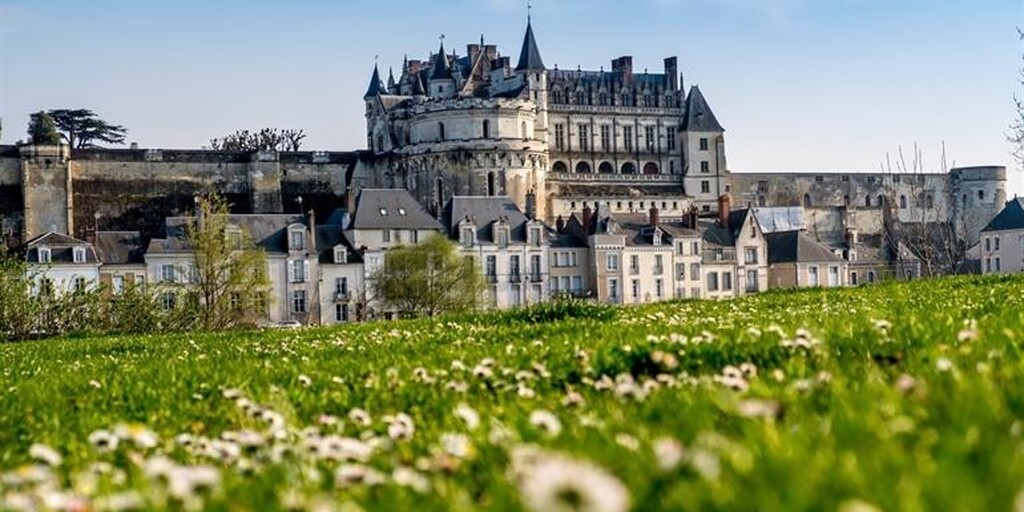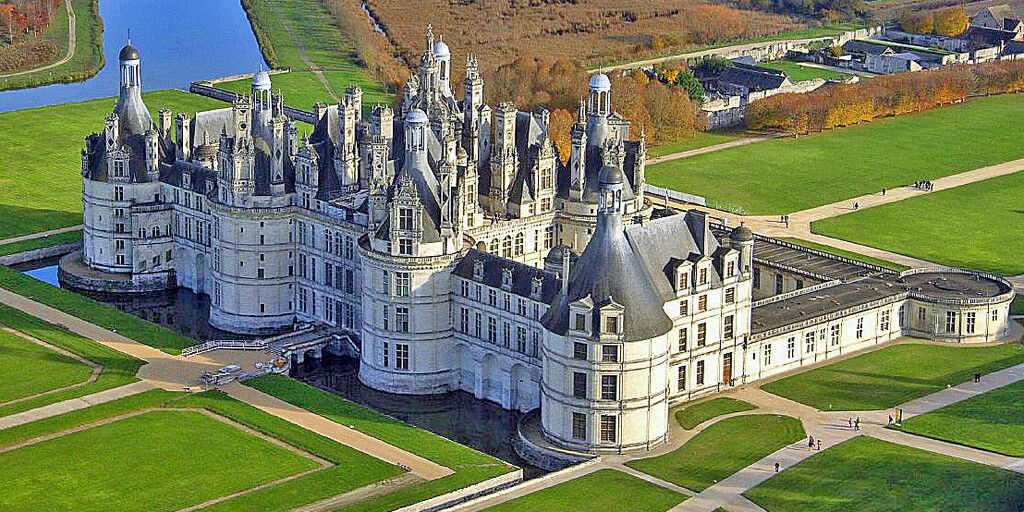
French Kings Valley Tour from Chinon

Questo percorso è stato creato da:
RouteXpert Jan Koelstra (jan cabrio)
Ultima modifica: 21-08-2024
 Riepilogo percorso
Riepilogo percorso Luogo di arrivo: Sully s/Loire
Questo itinerario segue principalmente le rive della Loira tra Chinon e Sully-sur-Loire nella parte denominata Val de Loire.
Oltre a Versailles e Fontainebleau, troverete una sfilata dei palazzi più belli e sicuramente più prestigiosi della monarchia francese. Da qui il nome di questo itinerario: Tour della Valle dei Re di Francia. È quindi logico iniziare il percorso a Chinon, dove tutto ebbe inizio con la Forteresse Royale.
La Valle della Loira era amata dai monarchi e dai nobili di Francia, che gareggiavano tra loro per costruire i castelli più imponenti e lussuosi. Ciò ha reso la regione la culla del Rinascimento francese.
La ricchezza naturale e culturale in particolare è travolgente. Non a caso il paesaggio lungo la Loira, lungo 280 km, è stato dichiarato Patrimonio dell'Umanità dall'UNESCO. Nella sezione della Val de Loire sono circa venti i castelli reali storici che potrete visitare, compresi i loro giardini, spesso bellissimi. Insomma, la Valle della Loira è un'ottima destinazione!
In questo bellissimo paesaggio visiterai un priorato e una famosa abbazia, città storiche e villaggi pittoreschi, tra cui Blois, Chinon, Tours, Meung-s/L, Amboise e Orleans, la città di Giovanna d'Arco.
La Valle della Loira è ora conosciuta per questi bellissimi castelli. Per tutte queste sorprese, a questo tour sono state assegnate cinque stelle.
 Condividi questo percorso
Condividi questo percorso 




Animation

Verdetto


Durata
10h 17m

Modalità di viaggio
Auto o moto

Distanza
272.31 km

Paesi


Chinon
 Revisione RouteXpert
Revisione RouteXpert Questo percorso è un percorso lungo i fiumi. Sebbene si parli spesso dei castelli della Loira, va ricordato che anche gli affluenti rivendicano il loro posto. Quindi guiderai spesso lungo l'acqua. Inoltre, nel Medioevo molte città sorsero lungo l'acqua perché la gente dipendeva fortemente dai trasporti lungo e sull'acqua. Il paesaggio è quindi prevalentemente pianeggiante, con strade tortuose e ben asfaltate con l'accento sui bellissimi castelli che si alternano a pittoreschi centri storici.
Il tour inizia a Chinon, che si trova sul fiume Vienne. Il castello di Chinon è di grande importanza nella storia della Francia, perché qui si rifugiò il re francese espulso. Fu anche qui che Giovanna d'Arco incontrò per la prima volta il futuro re di Francia, Carlo VII, al quale chiese un esercito. La nobiltà e la vita di corte a quel tempo erano strettamente legate e non sorprende quindi che da qui siano stati costruiti edifici di ogni genere.
Il prossimo palazzo non è lontano. Se passate dalla Vienne alla Loira, arriverete al fiume Indre. Seguirai questo fiume per scoprire tre gemme. Dopo pochi chilometri appare il castello d'Ussé del XV secolo. L'architettura è originale perché si basa su una combinazione di stili medievale e rinascimentale.
Un po' più lontano si trova il castello dell'Islette. Non reale, ma con un fascino reale. Ora puoi avere un appartamento lì. Camille Claudel e Auguste Rodin ti hanno preceduto.
Un po' più lontano, si presenta un altro gioiello: il castello d'Azay-le-Rideau. È costruito su un'isola nel mezzo dell'Indre. La sua architettura e il design franco-italiano ne fanno un castello emblematico del XVI secolo. I giardini, progettati nel XIX secolo, conferiscono al luogo un aspetto più naturale.
Si attraversa un altro affluente della Loira: lo Cher. C'è il castello rinascimentale Château de Vallandry, famoso soprattutto per i suoi giardini. Molto ristrutturato in passato in linea con lo spirito dei tempi, ma alla fine riportato al suo stato originale.
Poco prima di Tours passerai davanti al Priorato di Saint Cosme. Questo edificio prevalentemente religioso (qui vivevano i monaci già nel 1001!) divenne famoso perché ospitò il poeta Pierre de Ronsard. Dal 2010, quattordici vetrate originali di Zao Wou-Ki adornano il refettorio dei canonici. Nello splendido giardino del priorato, ammira la tomba del famoso poeta francese Ronsard e leggi i versi dei suoi versi speciali: "quand vous serez bien vieille, au soir, à la chandelle...." (quando sarai grande, in la sera accanto al fuoco...)
Dopo pochi chilometri, Tours chiama. Questa città ha anche una lunga storia di cui si può ancora vedere molto. La città è conosciuta tra gli appassionati di corse come il punto di arrivo della classica ciclistica Paris – Tours, che si tiene ogni autunno. La città è piena di vecchie case a graticcio e di edifici del XV secolo, soprattutto sulla strada principale della Tours medievale, Rue Colbert. La bellissima Cattedrale di Saint-Gaiten risale al XII secolo ed è una parte importante del paesaggio urbano con le sue 2 imponenti torri. Quindi visita, come momento per il tanto agognato caffè.
Amboise è una piccola cittadina oggi conosciuta soprattutto per il suo vino. Tuttavia, anni fa era la residenza della famiglia reale francese. Il castello di Amboise fu acquistato dalla famiglia reale nel XV secolo e dopo un'importante ristrutturazione divenne una delle dimore preferite della nobiltà francese. Dopo la visita tornerai al fiume Cher per il prossimo castello.
Lungo il percorso passerai il Madurodam della Val de Loire. Se non ne hai abbastanza, o ne hai semplicemente abbastanza, di tutti questi castelli, puoi fare una visita o un servizio fotografico. Il fatto è che tutti i castelli sono insieme.
Non dimenticherete presto un castello che si erge come un ponte sul fiume Cher: scoprite il castello di Chenonceau, capolavoro del Rinascimento. Oltre ad una ricca storia e splendidi interni, questo castello ha anche splendidi giardini da offrire. Sul terreno sono rimasti solo i vecchi resti del castello, del mastio, con il piazzale antistante. E anche qui attorno ci sono i canali. Le eleganti facciate dell'edificio principale, il Logis Bohier, si innalzano sul fiume Cher. Tra questa piazza e la riva sud è stato costruito un magnifico Pont-Galerie lungo 60 m. Si ritorna verso la Loira.
A metà strada tra il castello di Amboise e quello di Blois, il castello di Chaumont-sur-Loire domina il villaggio. La vista del parco dalla terrazza è fenomenale. Gli edifici presentano una certa ruvidezza feudale, temperata però dagli influssi rinascimentali.
Al tramonto, quando le stelle appaiono nel cielo, vivrai la storia di questa regione reale della Francia nel castello. Goditi un incantevole spettacolo di luci sulle mura del castello di Blois ogni sera d'estate e scopri la storia di questo sito storico.
Il re Francesco I aveva buon gusto, e lo dimostra questo gigantesco castello di Chambord, il più grande castello della Valle della Loira. Non esistono castelli più grandi di quello di Chambord sulla Loira. È costituito da un cortile sormontato da un mastio cinquecentesco circondato su tre lati da edifici. I frontoni e i camini del mastio formano una giungla ornamentale, di cui potrete godervi durante una visita alla terrazza sul tetto. Sei già entrato nella vera meraviglia di Chambord. Questa doppia scala a chiocciola è costruita in modo tale che il pubblico che sale e quello che scende non si incontrino.
Apparentemente il castello più grande dopo Chambord: con 131 stanze, il castello successivo è Château de Meung. Chiamato anche Château au Deux Visages (castello dai due volti) per via delle sue facciate medievali e classiche, questo castello ha ospitato grandi nomi della storia di Francia: ospiti importanti come i re Francesco I e Luigi XI e Giovanna d'Arco.
Ti stai ora avvicinando alla grande città di Orléans, che storicamente è stata una città molto importante, soprattutto per la sua posizione strategica all'estremità settentrionale della Loira. Era una delle poche città con un ponte sul fiume e divenne rapidamente una delle città più ricche della Francia grazie alle entrate derivanti dai pedaggi. L'eroina della Guerra dei Cent'anni, Giovanna d'Arco, è celebrata in tutta Orléans. In realtà non puoi perdertelo.
La città di Châteauneuf-sur-Loire possiede un ampio e piacevole parco alberato. Merita sicuramente una visita il Museo della Flotta della Loira, ospitato nelle antiche scuderie del castello.
Uno dei momenti salienti di tutt'altro ordine è senza dubbio la visita all'Abbazia di Fleury a Saint-Benoît-sur-Loire. Fu una delle più importanti abbazie benedettine di Francia. L'abbazia fu fondata intorno all'anno 630, ma l'abbazia acquistò grande importanza soprattutto dopo che i monaci trasferirono in questo luogo le reliquie di Benedetto nel 672. La basilica abbaziale in stile romanico custodisce nella cripta le reliquie di Benedetto.
Ora ti stai avvicinando alla destinazione finale di questo emozionante percorso. A Sully-sur-Loire. Questa affascinante città sulle rive della Loira, etichettata Città d'Arte e di Storia, risale all'epoca gallo-romana. Ma con la costruzione del castello all'inizio del XII secolo. gli fu dato prestigio dal Duca di Sully.

Château d'Amboise

Château de Chambord
 Collegamenti
Collegamenti  Utilizzo
Utilizzo Vuoi scaricare questo percorso?
Puoi scaricare il percorso gratuitamente senza un account MyRoute-app. Per farlo, apri il percorso e fai clic su 'Salva con nome'. Vuoi modificare questa rotta?
Nessun problema, inizia aprendo il percorso. Segui il tutorial e crea il tuo account MyRoute-app personale. Dopo la registrazione, la tua prova inizia automaticamente.  Disclaimer
Disclaimer
L'utilizzo di questo percorso GPS è a tue spese e rischio. Il percorso è stato accuratamente composto e controllato da un RouteXpert accreditato dall'app MyRoute per l'utilizzo su TomTom, Garmin e navigazione dell'app MyRoute.
Ciononostante potrebbero essersi verificati cambiamenti a causa di mutate circostanze, deviazioni stradali o chiusure stagionali. Si consiglia pertanto di controllare ciascun percorso prima dell'uso.
Utilizzare preferibilmente la tracklog del percorso nel sistema di navigazione. Maggiori informazioni sul l'uso dell'app MyRoute può essere trovato sul sito Web in 'Community' o 'Academy'.
Ciononostante potrebbero essersi verificati cambiamenti a causa di mutate circostanze, deviazioni stradali o chiusure stagionali. Si consiglia pertanto di controllare ciascun percorso prima dell'uso.
Utilizzare preferibilmente la tracklog del percorso nel sistema di navigazione. Maggiori informazioni sul l'uso dell'app MyRoute può essere trovato sul sito Web in 'Community' o 'Academy'.
